Lath and stucco replaced on this bridge
in Northeast Washington, DC
Here's how we did it:

Lath and stucco removed. Old pipes are rusty and deteriorated. Part of this bridge collapsed.
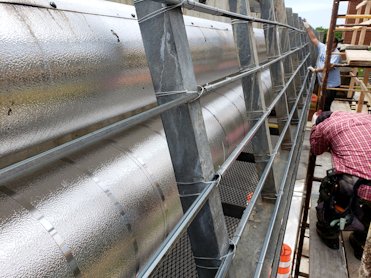
Channel iron furring, like original. Not only for support, iron reinforces the stucco like concrete re bar.
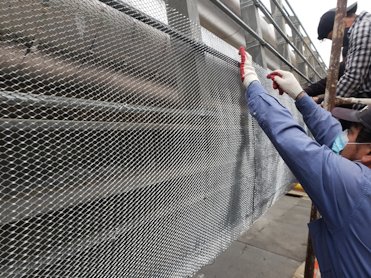
Metal lath wire tied to iron.

Lath is shot to beam using ramset pins. Corner beads are tie wired on.
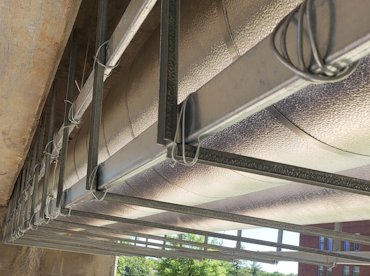
Channel iron framing for soffit, like original. Inch and a half iron is suspended horizontally with hanger wire.
Three quarter inch iron is wire tied 12 inches on center.

Metal lath and corner beads are tied on.

We scaffolded off half the bridge and lathed and browned half first. This minimized the time needed to
block the road.
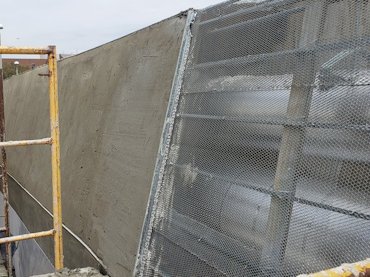
Stopping point halfway was this expansion joint. The original stucco was also done like this, with a joint.

Scratch coat is put on allowing plenty of room for the brown coat.
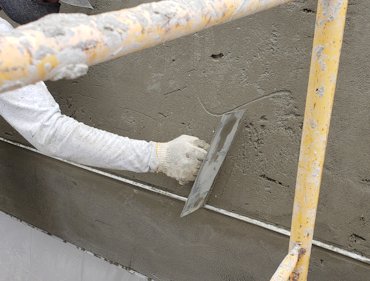
Brown coat is scraped or cut back allowing room for the finish.
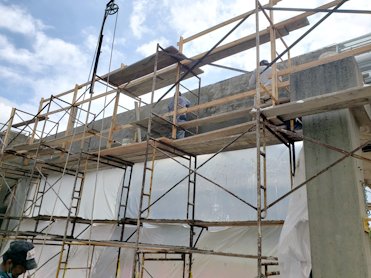
Plastic sheet is a splatter shield preventing mortar from slopping on the roadway.
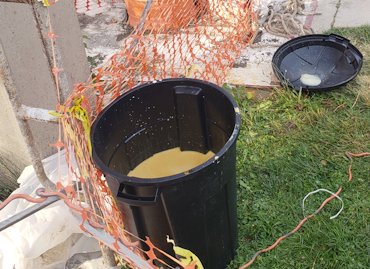
Color is mixed with half flexcon and half water in a garbage can.
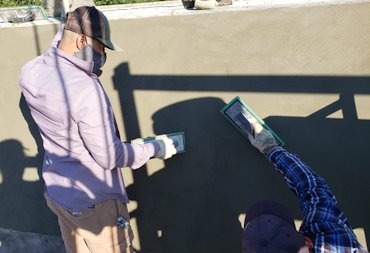
Finish coat is rubbed with a sponge float.
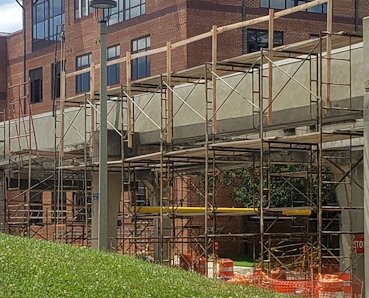
Finished bridge.














